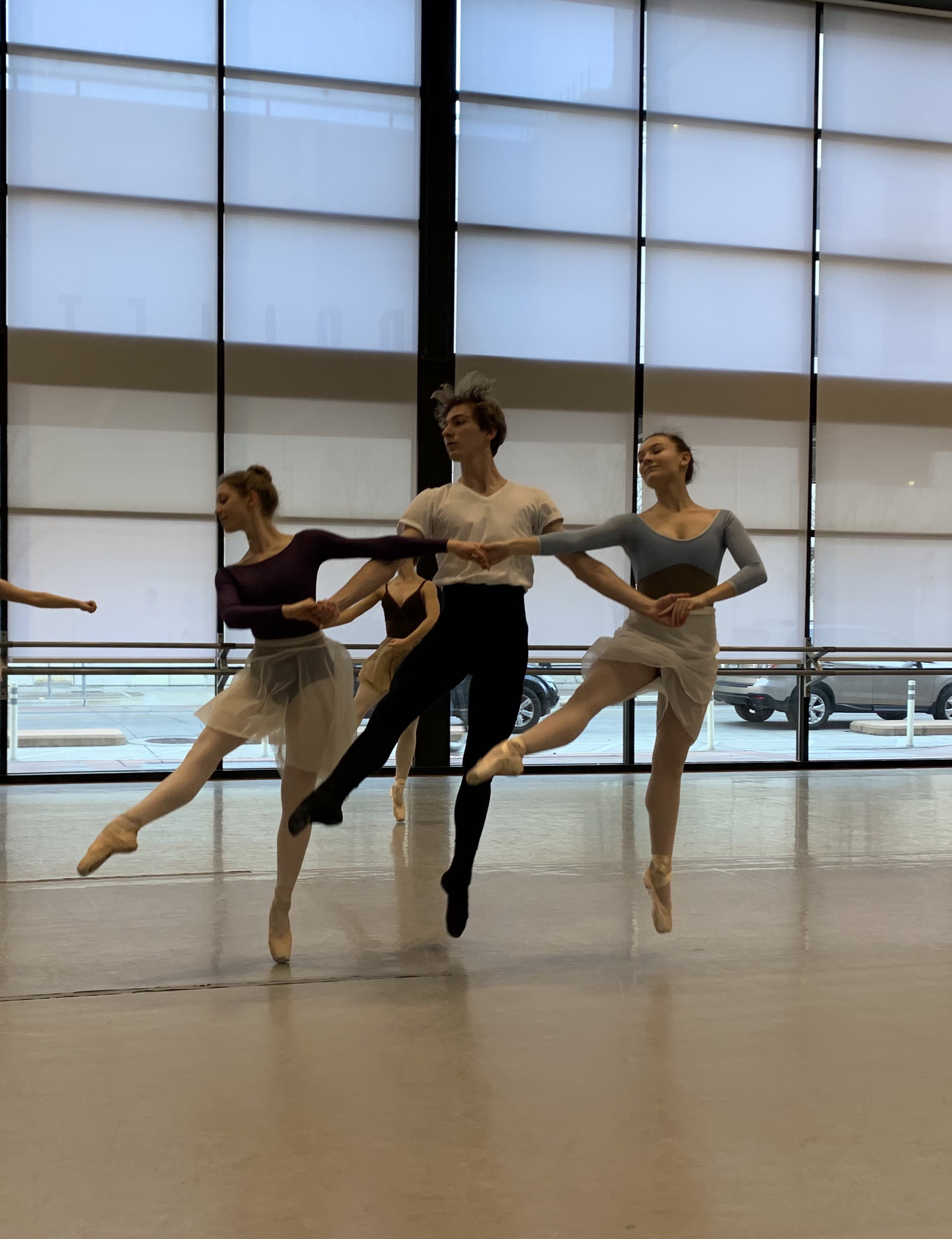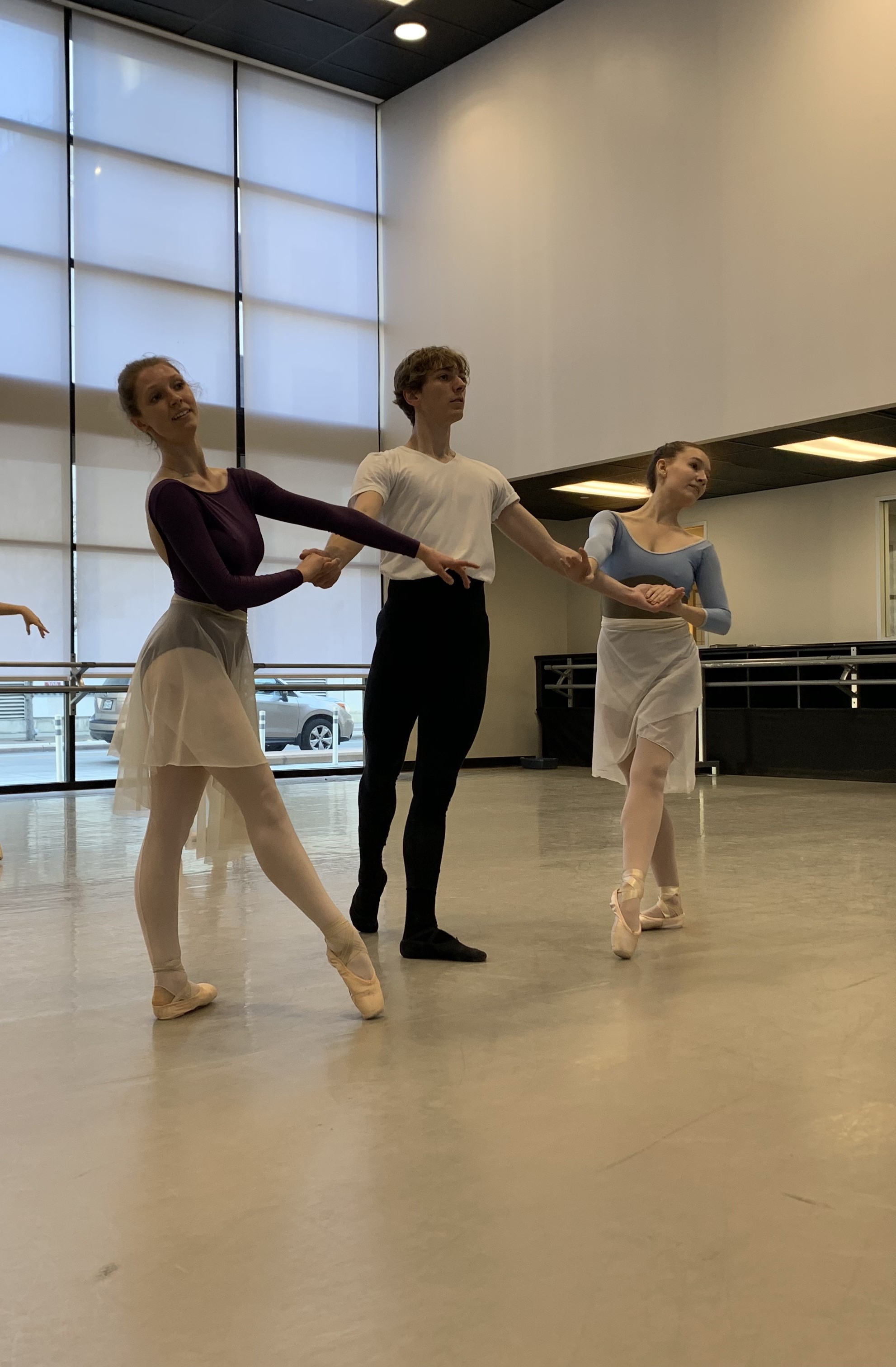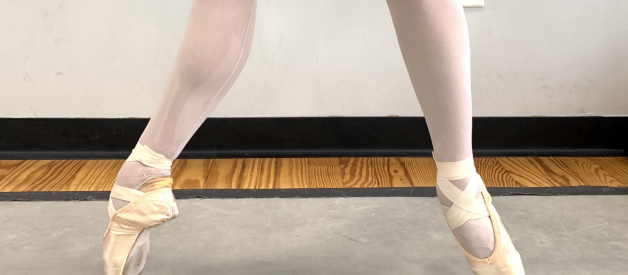By Leilani Tian
Perhaps you have witnessed the etherealness by which ballerinas stand, hop, and turn on the tips of their toes. Perhaps you have asked how they do it. None of it would be possible without a ballet dancer?s best friend and worst enemy: pointe shoes.

For ballet dancers, it?s so natural to go en pointe (on the tips of the toes) that they almost forget how unnatural it is ? how their bodies are not built for it. But don?t be mistaken, this nonchalance comes from years of proper pointe shoe training, a never-ending process of finding the right shoe brand and size, and finally, extensive self-tailoring of the shoe so that it becomes a supplement to beautiful footwork.
Dancing with pointe shoes takes strength, agility, and precision cultivated through years of repetition, resilience, and relevs (a movement in which the dancer rises on the tips of the toes). The tedious beginning years of proper pointe shoe technique training is a crucial foundation for later years of quicker, grander, and more complex footwork demanded by classical and contemporary works alike. As there are a variety of feet proportions and bone structures, finding the perfect pointe shoe is often a dancer?s journey of trial and error, deciphering which brand, size, and model will maximize both aesthetics and functionality while minimizing pain. Even then, the dancer?s pointe shoe preparation process can seem more like pointe shoe destruction ? bending, gluing, sewing, and some even hammering to create Cinderella?s glass slipper. Dancers adopt these tips and tricks over time, learning from other dancers, Youtube channels, and their own experimentation; some steps are shared and some are unique to each individual?s needs, all to avoid a dancer?s worst nightmare, shoes coming off or causing slips during a performance.
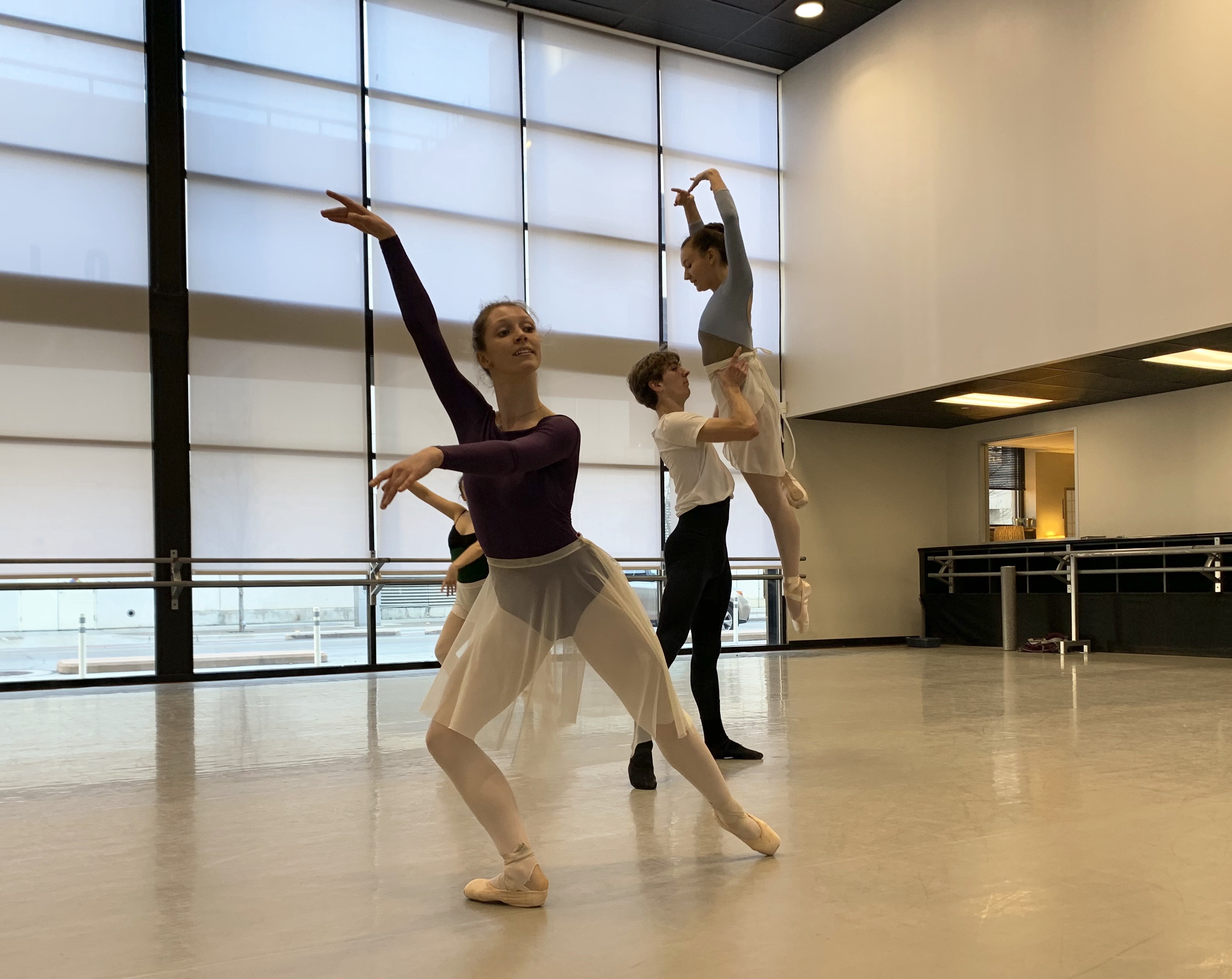 From left to right: Ballet Austin II Dancer Lizzie Kanning, Butler Fellow Craig Freigang, and Ballet Austin II Dancer Sam Howe in pas de trois rehearsal
From left to right: Ballet Austin II Dancer Lizzie Kanning, Butler Fellow Craig Freigang, and Ballet Austin II Dancer Sam Howe in pas de trois rehearsal
For the upcoming Ballet Austin II-Butler Fellow Spring Performance, Ballet Austin II dancers depend on their pointe shoes to enkindle the Spanish-styled elegant aura of the 19th century classic Paquita, originally choreographed by Joseph Mazilier and later revised by Marius Petipa. I got to sit down with two of Ballet Austin?s apprentices, Lizzie Kanning and Sam Howe, both dancing roles in the Paquita pas de trois (a dance for three people), a work filled with crisscrossing leaps and quick footwork ? all the more reason to ensure their pointe shoes don?t slip off mid-jump. Let?s get an inside look at their pointe shoe preparation process!
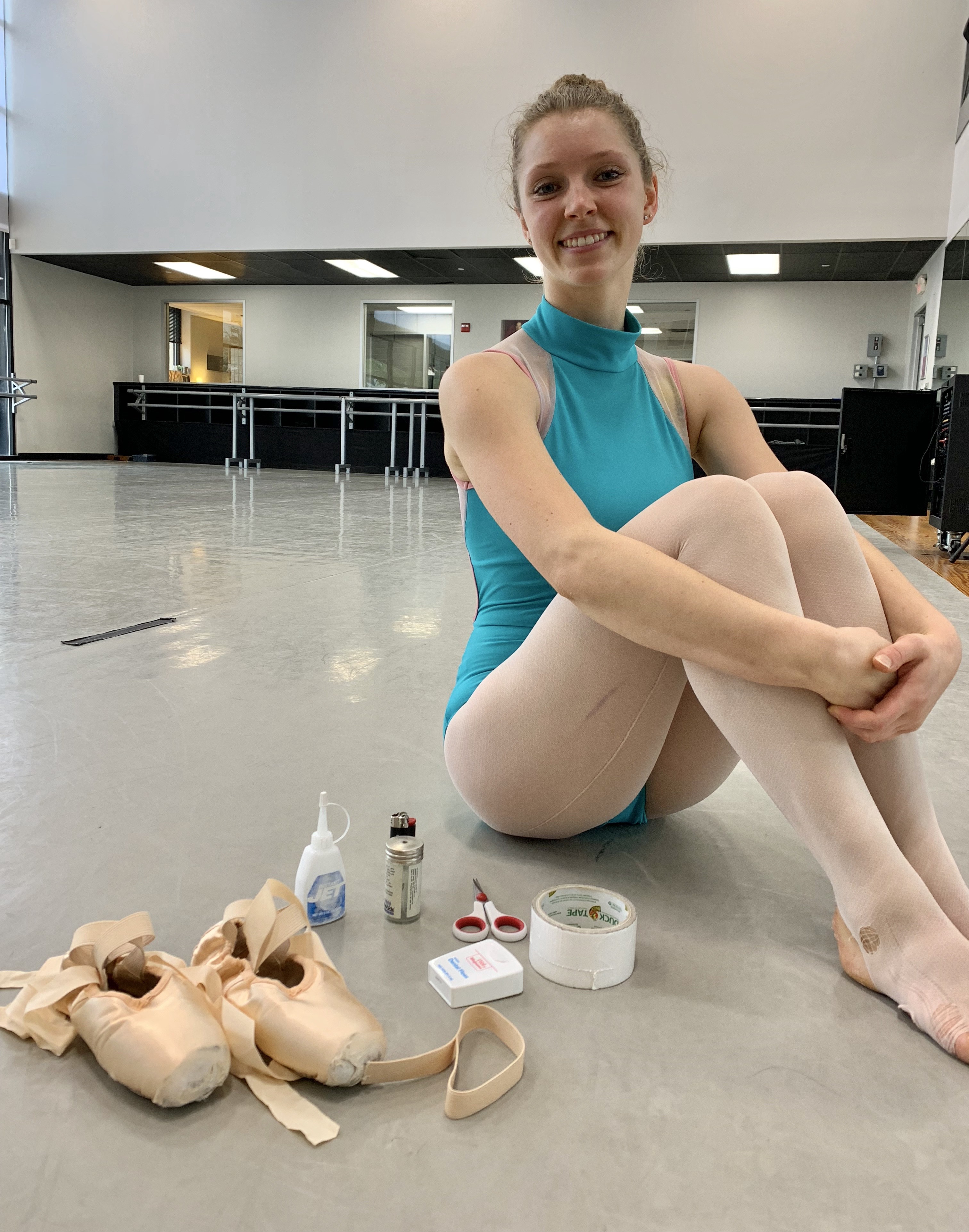
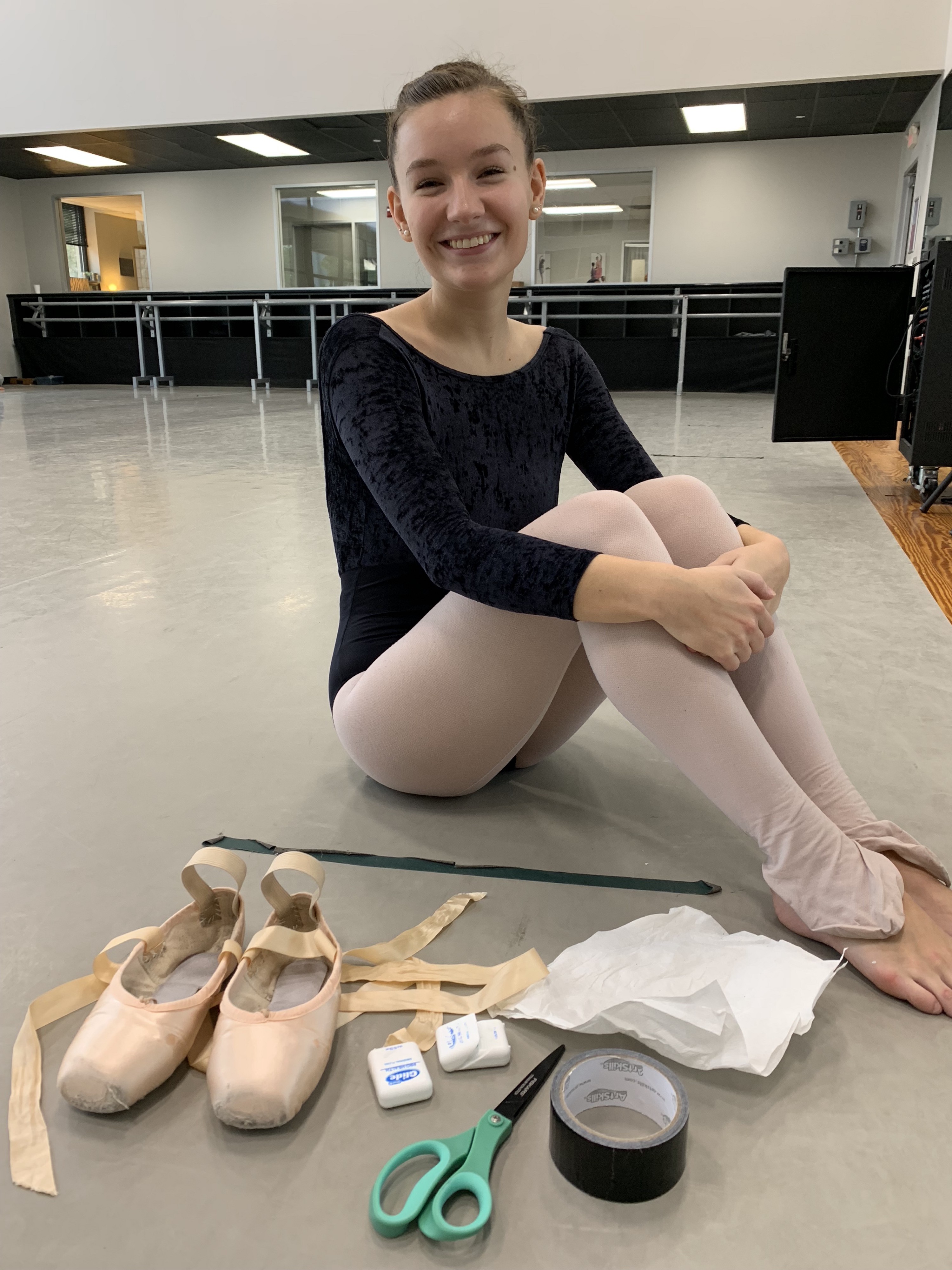 From left to right: Lizzie Kanning, Sam Howe
From left to right: Lizzie Kanning, Sam Howe
The preliminary step, common among all ballet dancers, is sewing ribbon and elastic on so that the shoes remain secured on the foot while hopping and turning and balancing. Dancers can either criss-cross the elastic, preferred by Lizzie or use a single band, preferred by Sam. Lizzie also uses elastic ribbons as opposed to Sam?s satin ribbons because they provide a bit more support and feel better on her ankles. Both use dental floss to sew on their ribbons to their shoes, as it provides a stronger hold than normal sewing thread. Finally, they both use a lighter to burn the end of their ribbons and elastic so that they do not fray.
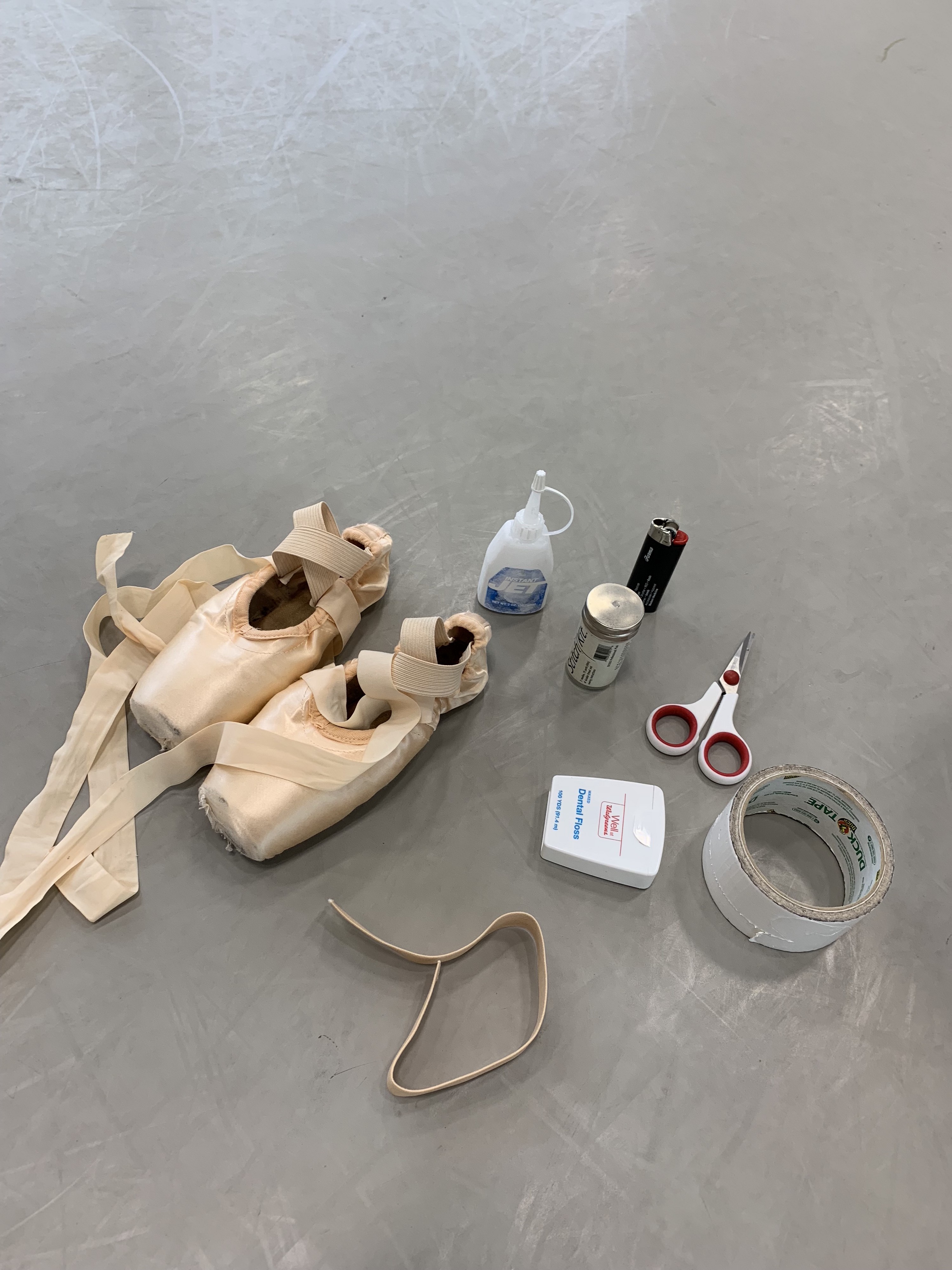
Another common preparation is the stiffening or softening of the shank ? rigid material on the sole of the shoe necessary for arch support. A brand new shoe comes in its stiffest form and there are varying degrees of shank stiffness from soft to hard that can be selected in a pointe shoe. Dancers then bend the shoes to ?break it in? so that the shoes form to the foot. Over the course of the pointe shoe?s lifetime, the shank gets softer. Often, pointe shoes are declared ?dead? or unusable when the shank becomes too soft. When the shank is too soft, it feels like dancing with ballet slippers. If the shank is too stiff, it feels like dancing with blocks on your feet. Maintaining the right shank, one that is supple but still supportive, is a balancing act.
Lizzie bends the shank with her hands at the point where her foot bends when she goes en pointe. Some people step on their shoes or put them under heavy objects to soften them. As soon as the shoes start to break in, she puts jet glue in the tips and along the sides of the bottom to harden the shoes. Jet-gluing is a common hardening method dancers use to maximize the life of their pointe shoes. The lifetime of Lizzie?s pointe shoes depends on how many rehearsals she has, what kinds of pieces she is working on (if they are pointe heavy or not), and how much she jet-glues them.
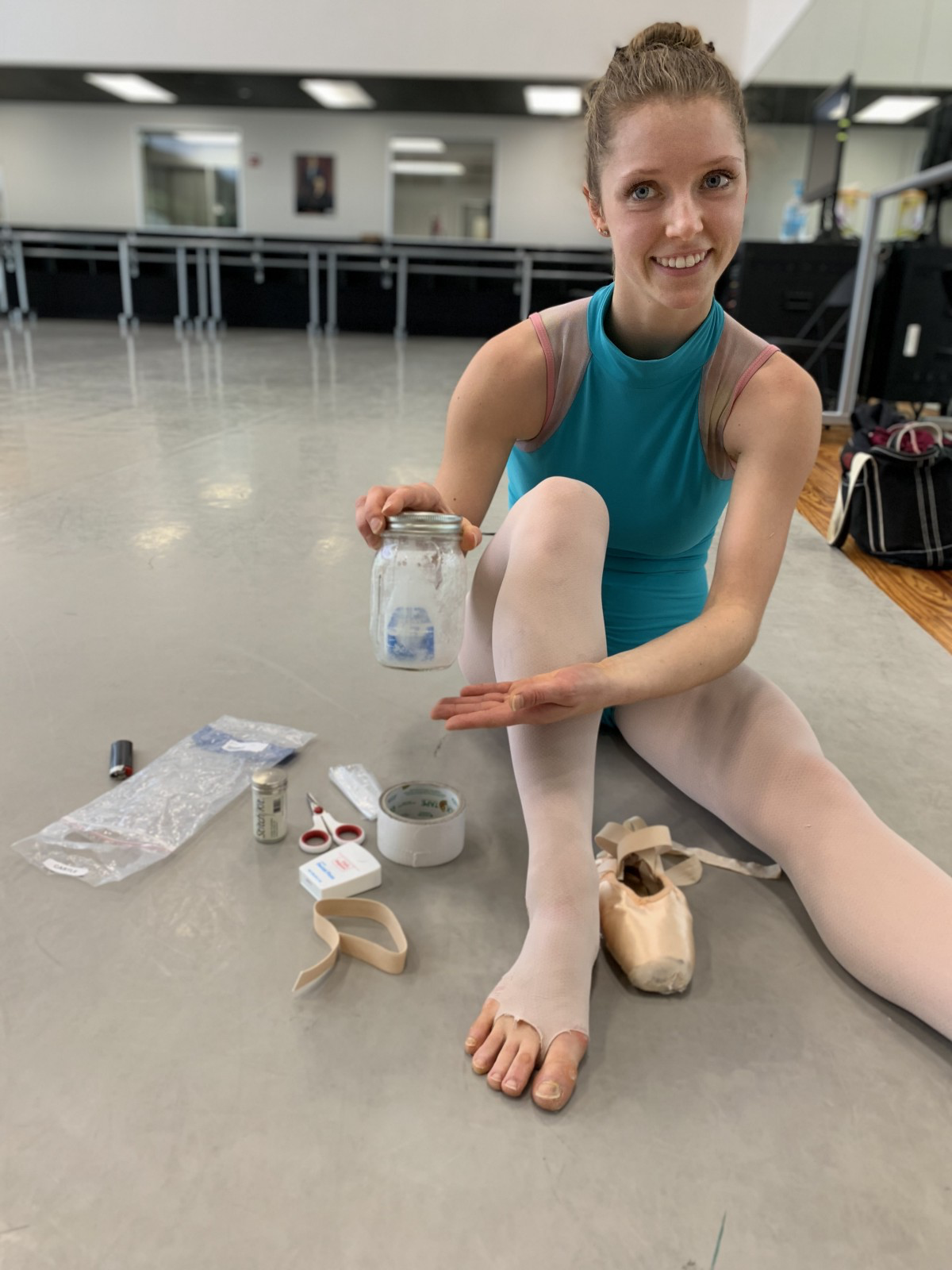 Kanning displaying her jet glue.
Kanning displaying her jet glue.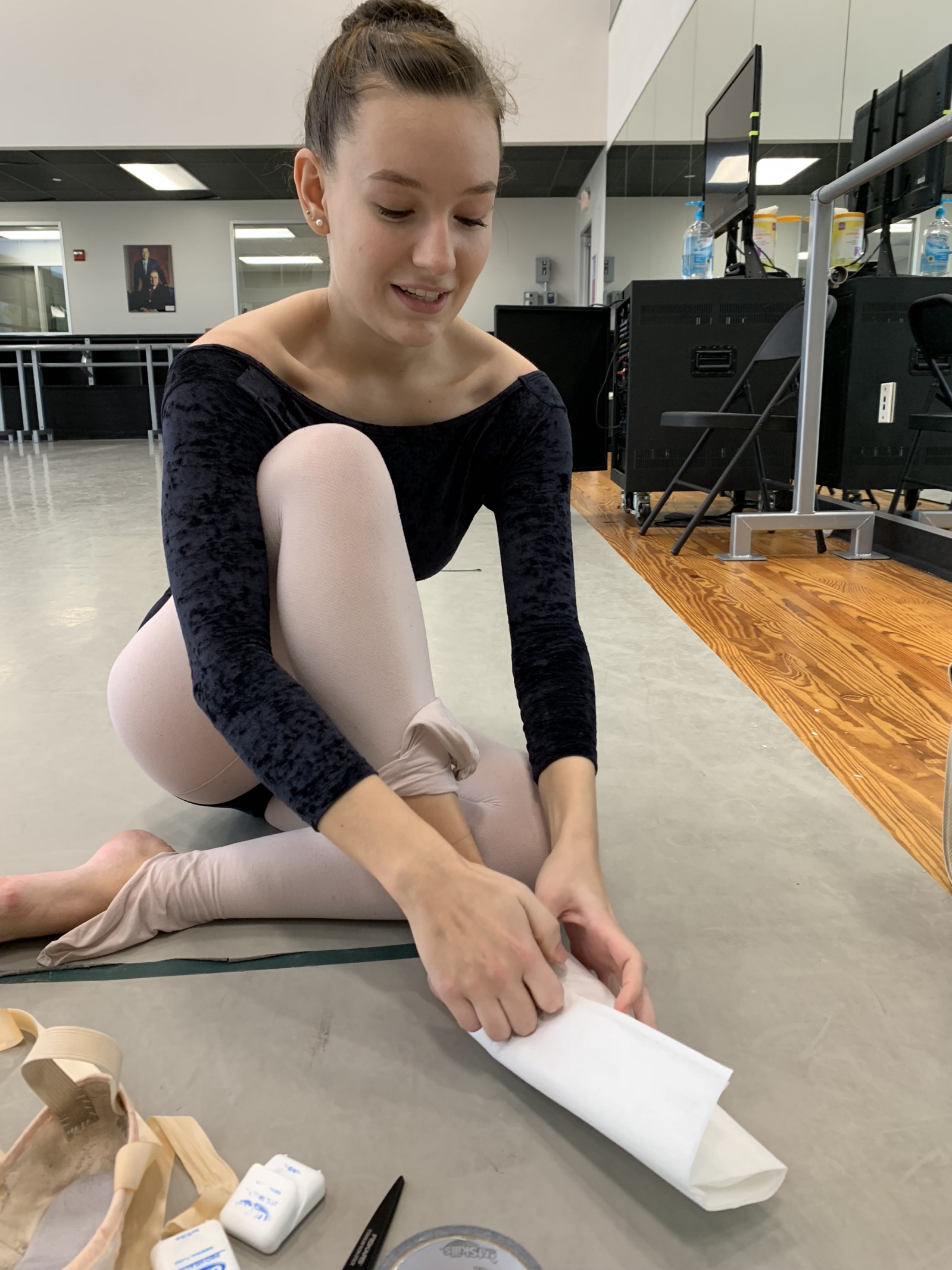
There are various ways to pad the feet inside pointe shoes. Toe pads can be in the form of cloth, gel, lambswool, or even paper towels. Sam describes her paper towel padding like wrapping a present ? she folds the sides and then the top over before putting her feet in the shoes. Lizzie does not use any padding so that she can feel her toes in the shoe (a brave feat)! When blisters emerge, both wrap their toes in duct tape. While it may seem strange to tape up toes, dancers do the most to protect their feet and prevent blisters. (Yes, that means keeping callouses!)
In general, the lifespan of a pointe shoe is brief. Some may last for only a few hours (or one performance) depending on the nature of the pointe work and how well they are maintained. A ballet dancer can go through more than 100 pairs of pointe shoes in one season, and at the average price of $80 per pair, taking care of them is essential. Ballet Austin dancers make a point of it!
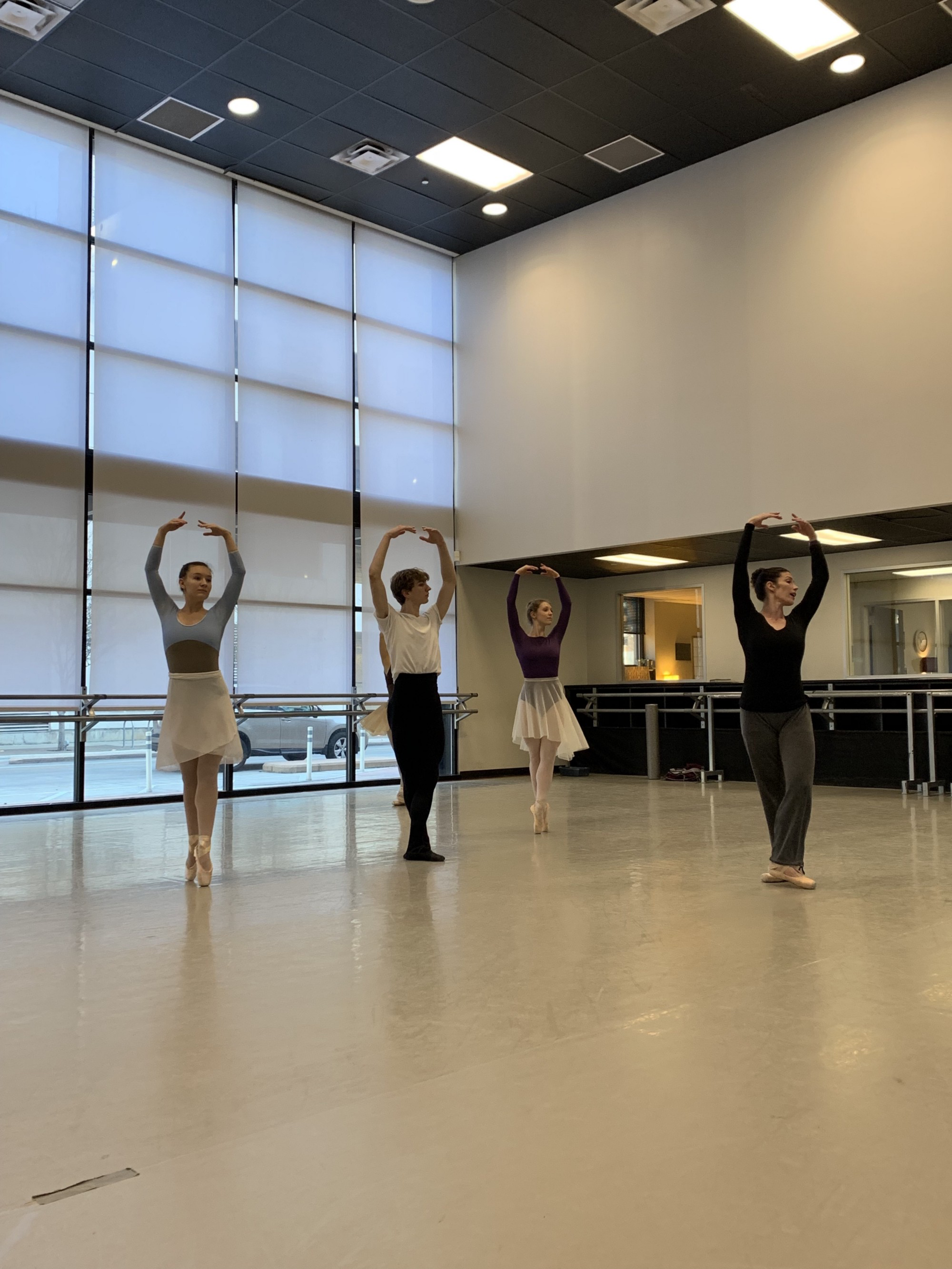 Veteran Ballet Austin dancer Ara Krumpe coaches apprentice dancers through pointe work during a rehearsal for the PAQUITA pas de trois.
Veteran Ballet Austin dancer Ara Krumpe coaches apprentice dancers through pointe work during a rehearsal for the PAQUITA pas de trois.